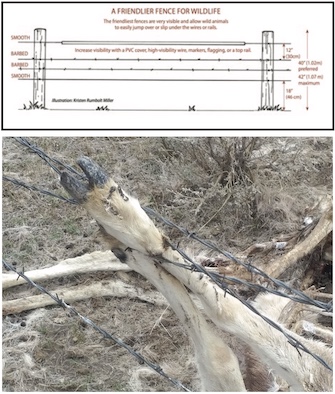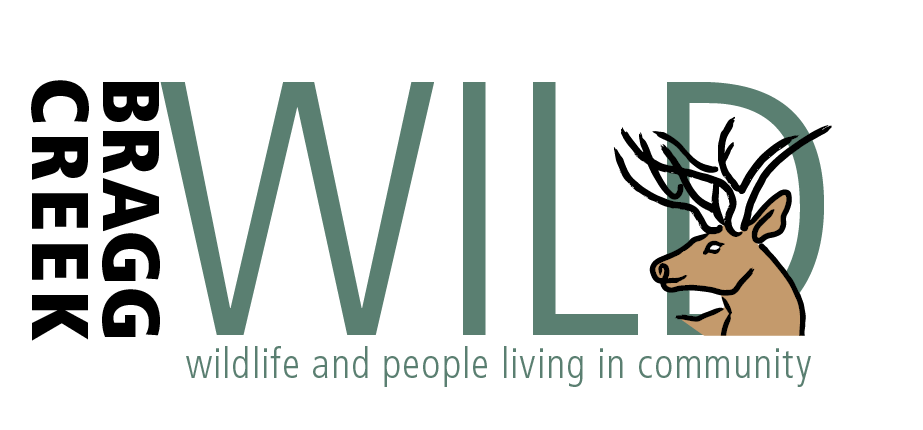The importance of Habitat Connectivity
One of the principal factors to the success of nature’s timeless renewal process rests on accessing sufficient spaces safely. Habitat connectivity is considered a cornerstone of a healthy ecosystem. Without it, Wildlife, plants and, ultimately, humans cannot thrive.
The National Wildlife Federation reminds us of the importance of habitat connectivity and its opposite – habitat fragmentation: “Wildlife moves both daily and seasonally to survive. However, the habitats animals rely on continue to be fragmented by housing, roads, fences, energy facilities, and other man-made barriers. As a result, animals are struggling more and more to reach food, water, shelter, and breeding sites.”
Spring is a key time for Wildlife. Mammals are on the move in search for food after a lean winter. They are looking for shelter to birth and protect their young. Migratory birds are returning, settling along waterways, into birdhouses and forested areas. Pollinators, birds, bats, butterflies, moths, flies, beetles, wasps, small mammals, and most importantly, bees begin their part in plant rejuvenation. They visit flowers to drink nectar or feed off of pollen and they transport pollen grains as they move from spot to spot providing essential food to wildlife and humans alike.
The good news is we bipeds can help our wild neighbours.
Drive mindfully, May to the end of June are the deadliest months. Fawning season modifies wildlife behaviours and increases their susceptibility to vehicle collisions. An eye on the ditch, slower speeds, and a readiness to stop immediately saves lives. Road crossings happen throughout the day with dawn and dusk bringing the greatest movement.
 Fence friendly, a fence can be a barrier to wildlife migration, some are wildlife traps. The friendliest fences are highly visible, they allow wild animals to jump over or slip under the wires or rails. It is heartbreaking to witness an animal entangled in a wire fence or a baby stuck and unable to get to the adults on the other side. Wildlife Friendly Fencing by Alberta Landholder’s Guide. Check out this excellent resource, you can find it on our website.
Fence friendly, a fence can be a barrier to wildlife migration, some are wildlife traps. The friendliest fences are highly visible, they allow wild animals to jump over or slip under the wires or rails. It is heartbreaking to witness an animal entangled in a wire fence or a baby stuck and unable to get to the adults on the other side. Wildlife Friendly Fencing by Alberta Landholder’s Guide. Check out this excellent resource, you can find it on our website.
Man’s best friend, can pose peril for wildlife. Dogs can cause disturbance, stress, habitat destruction, predation, disease transmission, and the spread of invasive plant species. Dogs should be under control in wildlife areas and leash areas respected, especially during breeding seasons. Training is key. A well trained dog will respond to recall commands and will not chase wildlife. Training is all part of the fun and an important piece in practicing responsible dog ownership (Note: recently there have been daily reports of dogs roaming our roads on local social media. Dog owners, let’s do our bit to change this). Consider installing a dog run or an invisible fence to keep your pet home.
Feline friends, can be both victim and predator. Cats are best kept indoors for two reasons, to protect them from being hunted and to protect the wildlife they hunt. A simple action with a win-win result! Cats kill est. 350 million birds every single year in Canada.
For more information, please visit our wild smart page on our website braggcreekwild.ca/wild-smart-ressources
Report a wildlife-vehicle collision to RCMP Cochrane 403-851-8000
Report an injured/orphaned wildlife to Cochrane Ecological Institute (CEI) – 403-932-5632
To pick up a dead animal, contact Rockyview County 403- 230-1401
Bragg Creek Wild
www.braggcreekwild.ca
braggcreekwild@gmail.com
403-200-9961
People and wildlife living in community


























